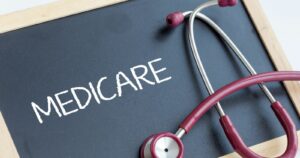‘Tis the season for PPP loans again! March 2020 saw the launch of the ambitious original PPP Loan Program as part of the CARES Act- a $350 Billion forgivable loan program for small businesses. In large measure, the program was very successful and helped many small businesses keep from being shuttered due to the pandemic.
In December 2020, Congress passed the second relief package, called the Consolidated Appropriations Act (CAA) and part of it is another $284 Billion in new funding for a second round of PPP Loans. The official name of PPP2 is Economic Aid to Hard-Hit Small Businesses, Nonprofits and Venues Act. The SBA refers to it as PPP Second Draw Loan.
PPP2 Loan
Many of the rules remain similar for this second round of loans as for the first, but there are important changes, too.
Loans to underserved communities began on January 11, 2021. It is expected that general disbursement of PPP Round 2 loans will start about January 18th.
Loans will be disbursed till March 31, 2021- or whenever funds run out.
No personal guarantee or collateral is required.
Who is Eligible?
The PPP Loan is meant for small businesses, with less than 300 employees.
Applicants must have been in business by February 15, 2020 to be eligible to apply for the loan.
Self employed individuals, including Independent Contractors are eligible for the loan.
You may apply for this round of PPP even if you got a loan through the first round of PPP Loans. You need not have applied for loan forgiveness for PPP round 1 yet- but you should have used up all your funds from the first loan before asking for the second one- or at least have plans for its use.
You need to demonstrate at least a 25% reduction in “gross receipts” in a particular quarter of 2020, as compared to the same quarter in 2019.
If you were not in business in 2019 at all, you can compare your gross receipts from one quarter in 2020 to another quarter in 2020.
The SBA’s Interim Final Rule defines gross receipts to include “all revenue in whatever form received or accrued (in accordance with the entity’s accounting method) from whatever source, including from the sales of products or services, interest, dividends, rents, royalties, fees, or commissions, reduced by returns, and allowances.” [Page 8, post script 9].
Loan Amount
Similar to the original PPP Loan, the maximum loan amount is 2.5 times your monthly payroll costs either (1) in the one year prior to the loan or (2) in calendar year 2019.
For Sole Proprietors, the calculation is 2.5 times their monthly profit as per Schedule C of their tax return.
The maximum loan amount may not exceed $2Million for a second time borrower. If you did not borrow a PPP round 1 loan, your maximum loan amount is $10 Million.
The calculation is different for some in the hospitality industry, which has especially suffered as a result of the pandemic.
The Lenders
As for the previous round of PPP, the second round will also be administered by community lenders and Fintech companies.
Application Process
Much of the documentation required is the same as round1 of PPP. If you are using the same lender as your first loan and you used 2019 figures to calculate your first PPP Loan amount.
You also do not need to provide documentation regarding the 25% reduction in gross receipts at the time of loan application if your loan amount is under $150,000. You need it only by the time you are applying for loan forgiveness.
Allowable Expenses
For the loan to be forgivable, at least 60% must be used for payroll expenses. Payroll expenses are defined the same way, as they were, for the original loan, but are expanded to include employer sponsored group life, disability, medical and dental insurance. The $100,000 annual compensation cutoff for highly compensated employees is still in place.
It also includes costs the business has incurred to comply with governmental regulations regarding precautions to be taken for the pandemic. This likely implies that your expenses towards Personal Protective Equipment (PPE), creating barriers/social distancing requirements at your business, can be included.
The 40% that may be used on non-payroll costs includes rent/mortgage, utilities- as for PPP round 1. However, this time around, costs towards business software or cloud computing services that aid in a number of business functions are included. It will be interesting to see if this means EMR costs could potentially be part of it. This will be important for a number of practices who spend a fortune on EMR costs.
Covered Period
The covered period can be any duration, between 8 and 24 weeks, as chosen by the borrower, from the date of loan origination. It doesn’t have to be either 8 weeks or 24 weeks, as for PPP round 1.
Loan Forgiveness
As for the original PPP Loan, the goal is to simplify the forgiveness application for loan amounts up to $150,000. It is expected to be similar to Form 3508-S that is is in use for PPP round 1 loans under the same amount.
The simplified forgiveness application is expected to focus on certification by borrowers that they complied with the eligibility requirements of the program, without requiring numerical calculations of the same.
Please keep records for several years following loan application, in case of audits.
For whatever is not forgiven, the loan term is a 1% loan for a term of 5 years, at least at the present time. Judging from PPP round 1, there may be changes. Stay tuned.
Further Resources
- SBA.gov: Paycheck Protection Program Second Draw Loans
- Second Draw PPP Loan Regulations
- Congress Imposes Significant Changes to Paycheck Protection Program
I hope this helps. Please note, none of this is meant as official tax/legal/financial/business advice. Please check with the professionals before you make any decisions.




